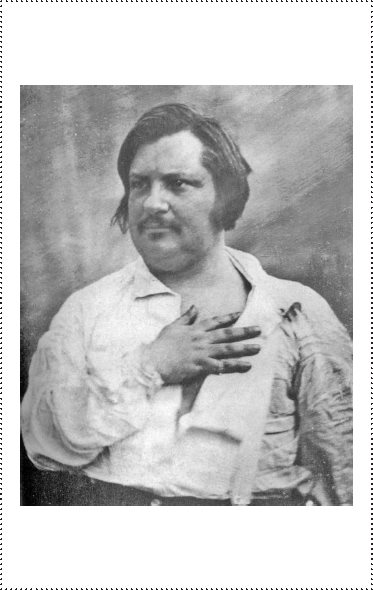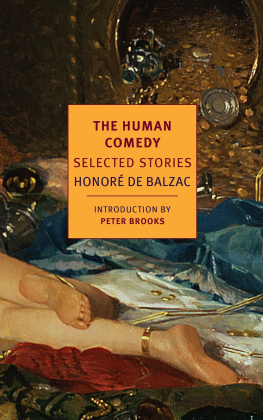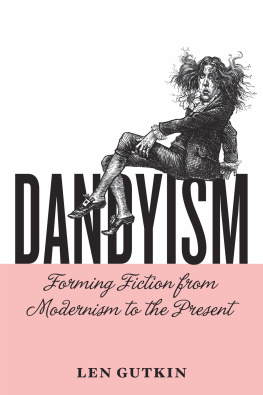Contents
Page List
Guide

TREATISE ON
ELEGANT LIVING


Honor de Balzac, after the daguerreotype by Louis-Auguste Bisson, 1842.

TREATISE ON
ELEGANT LIVING
Honor de Balzac

Translated by Napoleon Jeffries

WAKEFIELD PRESS, CAMBRIDGE, MASSACHUSETTS
This translation 2010 WAKEFIELD PRESS

Wakefield Press, P.O. Box 425645, Cambridge, MA 02142
All rights reserved. No part of this book may be reproduced in any form by any electronic or mechanical means (including photocopying, recording, or information storage and retrieval) without permission in writing from the publisher.
This book was set in Garamond Premier Pro by Wikefield Press. Printed and bound in the United States of America.
PRINT ISBN: 978-0-9841155-0-1
EBOOK ISBN: 978-1-939663-54-2
Available through D.A.P./Distributed Art Publishers
75 Broad Street, Suite 630
New York, New York 10004
Tel: (212) 627-1999
Fax: (212) 627-9484
10 9 8 7 6 5 4

CONTENTS

TRANSLATORS INTRODUCTION
Giving style to ones charactera great and rare art! It is exercised by those who see all the strengths and weaknesses of their own natures and then comprehend them in an artistic plan until everything appears as art and reason and even weakness delights the eye.
Friedrich Nietzsche
AS LONG AS CLOTHES make the man, the dandy will continue to cast his shadow into the twenty-first century. He may at times seem like a pale shadow, an outline without actual contentthe ghost of an apparition of a man: superficiality remains, after all, one of the more superficial attributes ascribed to the dandy. But in an age when history and heritage are fading, where appearances are looked upon as deceiving while also accepted as truth, and where rebellion and conformity exchange masks, the legacy of the dandy remains illuminating. Given high capitalisms reduction of being to having, there is even a sort of salvational aura to this figure of the dandy, who two centuries ago broke down the barriers between aesthetics and the everyday, renounced the busy life of production and utility, and instead turned his own life into a work of art.
What was the dandy, though? If the dandy denies predecessors, and pointedly leaves no progeny, he does nonetheless have a history, and Honor de Balzac may be credited as one of the first to have made a conscious attempt to imagine this history. Its starting point is incontestable: be he fop, urban narcissist, metrosexual, or artist formerly known as Prince, every dandy bears allegiance to Beau Brummell, the original dandythe only dandy, perhaps, that ever truly existed. For Brummell left no model to emulate, no handbook to follow, no anecdotes to relate, and no real clues for posterity to understand what had made him who he waswhat had prompted Lord Byron to claim that he would have rather been Brummell than Napoleon. Even when alive, Brummell was more of an abstraction than a man, and with his absence, dandyism necessarily became as much a theory as a practice, and the man as much a literary figure as a historical one. Brummell has become an ineffable archetype; if he does not have quite the same literary stature of Don Juan or Hamlet, he could still easily rub shoulders with the likes of Oblomov or Sherlock Holmes (if, that is, rubbing shoulders were not an activity he abhorred).
Born in 1778, George Bryan Brummell reigned over the early nineteenth century in England and the rather contemptible period of the British Regency: exclusivism held sway, a reactionary idleness filled in for a crumbling aristocracy, and the unspoken rules for initiates able to afford the game were established not so much by George IV, but by his rebellious favorite. Brummell was, as Barbey dAurevilly put it, the autocrat of opinion. The measuring rod for every action (and more significantly, every nonaction), was fashionability: marriage and women were not fashionable; going into debt and being idle were. It is hard not to side with Thomas Carlyle in his declaration of what was essentially class war against that exclusive minoritya war he described as being between the Dandies and the Drudges.
What would have been a fairly clear-cut class antagonism, however, was complicated by Brummells background: for if he acted the aristocrat, lived the life of an aristocrat, and was courted by the aristocracy, Brummell was no aristocrat. He was a new kind of autocrat, natural-born in that he came from no family (to his middle-class familys understandable chagrin), and sired none; he was for all intents and purposes a self-sired autocrat, whose example in dignified manners, elegant dress, and stoic distinction could eventually be followed by members of any class and occupationprovided, of course, they had access to a sufficient amount of funds to maintain a life of leisure.
But Brummell was more than an infiltrator of ranks; he was a new kind of individual. If it was his nature to live beyond his means (insolvency was the inevitable outcome for Brummell and his followers), it was his legacy to live beyond societys understanding. Whereas the snob (a different character altogether, albeit one understandably confused with the Regency dandies) maneuvered within society by laws and manners established by that society, the dandy operated in accordance with laws of his own making, and for an audience that consisted of himself before anyone. The practice of elegance and taste was one that either passed unnoticed by anyone save the initiate, or one that shocked the populace; it could find an outlet in the reactionary politics of the secret society, or the more striking and rebellious form of modernist shock: the dandies were the first to employ the now normalized practice of shocking the bourgeoisie.
It took the French, however, to recognize and elaborate upon these still budding qualities of the dandy, and formulate an intellectual brand of aesthetic and social egoism that would inform modernism and would find its culmination in the figure of Charles Baudelaire. It would be in France that the dandy and the bohemian would become two sides of the same coin, the dandy simply having money, the bohemian doing without (it was even quite natural to start a dandy, as Baudelaire did, and finish a bohemian). And it is in France that the second, and most interesting, stage of dandyism took place.

















